Humans are often inclined to see themselves as the apex of nature on Earth. Social insects may make up a quarter of living animal mass, sharks may be a vastly older lineage than hominins, and the very air we breathe owes its composition to plants but…humans invented digital watches, humans clutter the night sky with satellites, and perhaps most importantly of all, humans have the largest buttock to body mass ratio of any known species. Clearly, to quote A. E. Van Vogt, we are “the race that shall rule the sevagram”.1
A key phrase above is “on Earth.” Most of the universe is not on Earth. How upsetting it would be to encounter a technologically superior extraterrestrial (or extradimensional) civilization for whom humans are beneath notice—or worse, pests to be exterminated. Consider these five vintage tales.
“Child of Void” by Margaret St. Clair (1949)
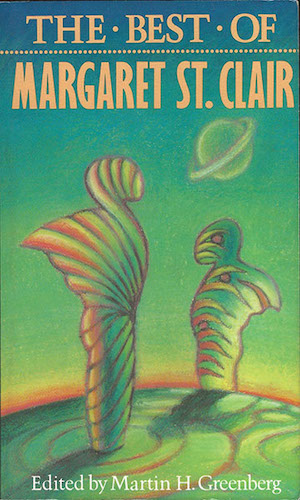
Fleeing a big city for the bucolic comforts of the country, a single mother and her children discover their isolated farmstead is isolated for a reason. Hidden Valley abounds with inexplicable, alarming phenomena. That’s because Hidden Valley is home to unpleasant energy-beings little interested in human preferences regarding basic physics. Unable to overpower the beings and unwilling to leave, the humans will have to find some means of co-existence. Step one: get the aliens’ attention. Step two: search for a way to survive step one without dooming humanity.
Hands up, everyone who is surprised that managing to attract the attention of vastly powerful entities might be worse than living with oblivious, powerful neighbors?
The Kraken Wakes by John Wyndham (1953)
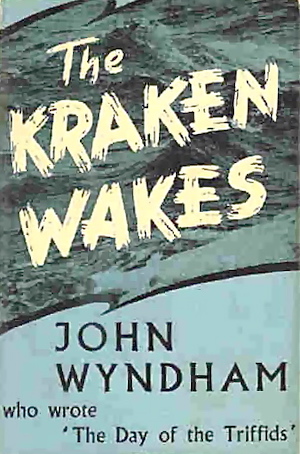
If the fireballs that light up Earth’s sky are indeed alien spacecraft, then their methodical selection of the Earth’s deepest oceans suggests reason for hope. The aliens seemingly require pressures found only at the bottom of the abyssal deeps. Contact seems unlikely. Without contact, why should there be conflict?
Humanity is slow to grasp that they are on the losing side of a protracted struggle. Earth, it seems, is not quite up to the alien housing code. The unseen aliens appear indifferent to human suffering as the Earth warms and the sea levels rise. Should humans attempt to use their nuclear weapons to rebuke the visitors? The aliens have direct means of expressing displeasure.
The aliens in this novel simply crank up the heat like side effects don’t matter to them. I accept all kinds of wild science fiction ideas, but it seems unlikely that any civilization would wantonly induce planetary climate change without taking some steps to avert catastrophic ecological collapse. What kind of idiots are transforming the Earth?
Day of the Star Cities / Age of Miracles by John Brunner (1965/1973)
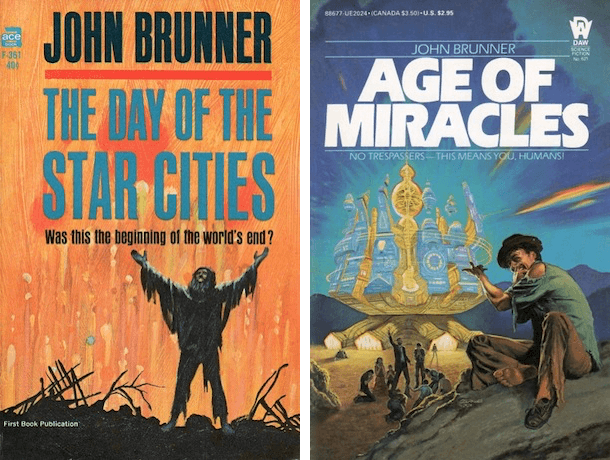
First contact with Earth’s new owners came when every lump of fissionable material on Earth spontaneously detonated. By the time human governments restored some semblance of stability, vast alien cities had been established. Aside from ensuring humans cannot threaten them, the star city’s builders have little interest in humans. Humans, on the other hand, have considerable interest in the aliens. If we cannot drive Earth’s new masters away, then perhaps we can exploit them… provided humans are careful not to annoy their new neighbors in the process.
Alien pest control includes the aforementioned nuke-go-boom field and proximity-triggered madness. Because we never get the alien point of view, it is unclear if these were created with humans in mind or if they are just standard kit for all the worlds the aliens claim. However, both are area weapons, not targeted at specific people.
As with the previous story, getting the otherwise aloof aliens’ full attention is a very bad idea, particularly if the storehouse of stolen alien artifacts one has amassed is in the room directly beneath one’s office.
Of Men and Monsters by William Tenn (1968)
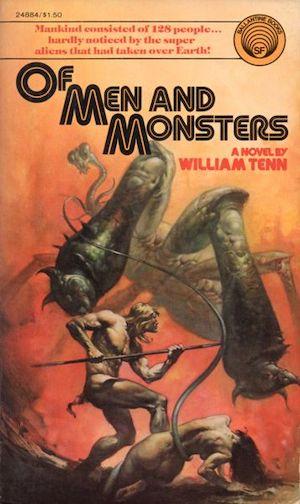
The aliens who commandeered Earth are not merely vastly superior to humanity; they are much larger as well. Humans underfoot risk being trampled literally as well as figuratively. Small wonder prudent humans hide within alien walls like mice in human domiciles.
Although they’ve lost control of their world, humans retain some of their old customs, including rites of passage. Young Eric must venture into the alien homes to retrieve some useful item. Many have set out on such quests. A smaller number have returned. If Eric can survive, it is possible he will return with a treasure long lost to humans: hope.
Among his various proclivities, Tenn was a satirist. It should not surprise readers that on occasion humor inspires him to pursue the parallels between humans living like mice and actual mice living like mice farther than one might expect.
Roadside Picnic by Arkady Strugatsky & Boris Strugatsky (1972)
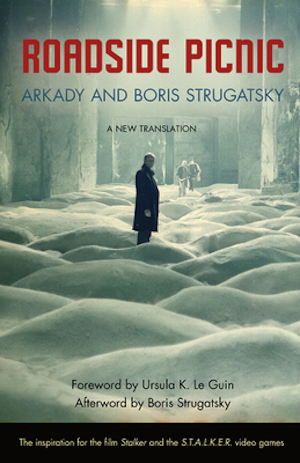
Unlike the previous examples, the aliens in this Russian classic had no interest in colonizing Earth. The reason for their brief sojourn may never be known. What is known is that the visitors left enigmatic, often dangerous relics in the so-called Zone. Sufficiently brave humans search out and retrieve these relics. The lucky ones scrape out a living. The unlucky provide edifying cautionary tales about the dangers of tampering with the unknown.
Roadside Picnic was enough of an obvious classic to attract translation soon after it was published. Unfortunately, the earlier translations are not quite what one might hope, so I recommend readers seek out the more recent University of Chicago translation.
***
No doubt there are many classics I could have mentioned but did not.2 No doubt many of you have favorites not mentioned above. Feel free to mention them in comments below.
In the words of fanfiction author Musty181, four-time Hugo finalist, prolific book reviewer, and perennial Darwin Award nominee James Davis Nicoll “looks like a default mii with glasses.” His work has appeared in Interzone, Publishers Weekly and Romantic Times as well as on his own websites, James Nicoll Reviews (where he is assisted by editor Karen Lofstrom and web person Adrienne L. Travis) and the 2021, 2022, and 2023 Aurora Award finalist Young People Read Old SFF (where he is assisted by web person Adrienne L. Travis). His Patreon can be found here.
[1]I too have no idea what van Vogt meant.
[2]Some of the works, like the novels in Varley’s Eight Worlds setting, are absent because I have mentioned them here before. My readers might tire of the same old works trotted out again and again.











There’s The Invaders episode of The Twilight Zone.
How can you overlook Battlefield: Earth?
2: Comprehensively.
@2 – With great disdain, probably.
Another example: Le Guin’s City of Illusions, in which Earth was long ago conquered by the Shing. It’s apparently set in her Hainish universe although I am not sure exactly how it fits in.
I’m rereading David Brin’s Uplift books at the moment, and as far as the aliens believe, anyway, humans are puny upstarts…(that believe doesn’t always work out super well for them)
Heinlein had a surprising number of Puny Human stories: Goldfish Bowl, By His Bootstraps, Methusaleh’s Stepchildren, and even Space Cadet.
Gordon R. Dickson’s Way of the Pilgrim fits, and deals with the dehumanizing side effects of being the translator for aliens who continually refer to humans as “beasts” and treat them as such.
@6 – Not to mention The Star Beast and Have Space Suit, Will Travel.
@8: Thanks
@6, @8 Also the Martians in Stranger in a Strange Land. As I recall, it’s mentioned in passing that they destroyed the “fifth planet,” resulting in the asteroid belt, because they grokked a “wrongness” about it.
Also the Kolchak: The Night Stalker episode “They Have Been, They Are, They Will Be…”
Big Ancestor by F L Wallace. Early interstellar exploration suggests that humans may be a ring species, with worlds along an arc of stars each having its own variation with a consistent genetic drift. An expedition is launched to locate the ancestral homeworld and find the original humans. Confusion ensues…
“Cyber Way” by Alan Dean Foster has Navajo sandpaintings based on an alien encounter in the distant past that turn out to have strong side effects if properly (or improperly, sorry about blowing up that police station) used…
There’s the F. L. Wallace story “Big Ancestor”. All the various races of humans in a far future Galaxy believe they are descended from a common, very large, ancestral race. But then they learn their true relationship to that race.
It’s a cute story in its way but biologically sort of ridiculous, and motivationally unconvincing. Also sexist, but then, it was the 1950s.
[And I see that Anthony got there before me!]
Barry Malzberg’s Phase IV has superior aliens correcting an error in Earth’s evolution by uplifting ants to eliminate humanity.
We should also give a shout-out to the creators of the Monolith in 2001: A Space Odyssey.
Ones who want a different ecosystem, I would guess. Once they have the temperature right, and have killed off almost all the pre-existing ecosystem as a side effect, they can install the one they brought with them.
Some digging brought out this description of Sevagram:
This jibes with Wikpedia’s article on Sevagram:
I saw the title, and immediately thought of another William Tenn story, “The Liberation of Earth”, in which two mutually hostile alien species take turns liberating the Earth from each other. There’s not much left of the Earth by the end, but it’s been well and truly liberated.
The Oankali in Octavia Butler’s Xenogenesis/Lilith’s Brood trilogy are quite mild-mannered and pleasant for alien colonizers. They are, after all, saving humanity from itself. On their terms, for their reasons, and using a method of colonization that’s distinctly… intimate.
Which reminds me of another story where humanity is at a distinct disadvantage against the aliens; James Tiptree Jr.’s “And I Awoke and Found Me Here on the Cold Hill’s Side”.
Two books that no doubt have been discussed many times before: The Genocides and The Puppies of Terra, both by Thomas Disch. In one the aliens keeps humans as pets, in the other they barely notice us.
I’m rather fond of the aliens in Jack L Chalker’s “Four Lords of the Diamond” series. To them humans are interesting in their ability to interact with the other aliens (who are even more powerful). That is, until they start ‘interfering’ in their project….
‘The Killing Star’ by Pellegrino and Zebrowski – so bleak, so brutal.
The second of John Varley’s Thunder and Lightning quadrology, Red Lightning has just those sorts of mysterious and powerful aliens — who start dropping big rocks on Earth.
So a sevagram sounds like a really nice chair then. :-) With the television remote control, maybe,
C.J. Cherryh’s Foreigner series. First contact story. Lost Human spaceship which has overshot its planned destination by so much that they can’t even locate any familiar stars. And out of fuel. Desperate, they manage to get themselves – with great effort and sacrifice – to a hospitable star, with a promising planet, which is already occupied by a steam-era race.
The Atavi are human-like but bigger, stronger, and tougher than we are. Long history of high culture and intricate politics. Initially, things go pretty well. But the two species don’t really understand each other, and trouble arises.
The human character at the centre of the story (quite tall for his own race) is described as being about the size of a nine year old Atavi boy. His feet swing when he sits in a chair. Atavi who know how fragile humans are are careful not to thump him on the back
I like first contact stories generally, but this one is brilliant. Reading them for the first time and enjoying them very much.
@25: s/Atavi/Atevi/ — but yes, they are brilliant; only series I’ve found worth following nearly so long (22nd book out next month…).
@19 In “Awoke” I was amused that one of the humiliating things a human does because of his fascination with aliens is pretend to be a Packers fan.
It would be better if I could remember where I read this or could get the wording exactly right, but:
Mankind is the greatest of the animals. This is universally acknowledged, according to every species who filled out the questionnaire.
@17 Re-forming Earth to their own climate and atmosphere was the goal of the Earth-conquering aliens in John Christopher’s “Tripods” trilogy. They did plan on keeping a few surviving humans in a zoo, as curiosities, but had already been preserving dead, taxidermied humans in a museum.
@12 available here: The Project Gutenberg eBook of Big Ancestor, by F. L. Wallace.
I’m not clear about the copyright status of this. Presumably PG would not have this if it were under a valid copyright?
Gregory Benford’s “Alphas” has an advanced cyborg race move in, take over Venus and core it like an apple. They only pause to issue us a polite warning to stay away… but since when did humans ever heed warnings?
John Varley’s “Just Another Perfect Day” had n-dimensional aliens conquer the Earth by editing it: they invaded at multiple points in history but preserved our memories of the un-invaded timeline so we’d know what they’d done. They also erased things from existence, like Lake Huron, the Presbyterian Church, the letter Q, and so on (again, letting us remember that these things existed), and then parked huge spaceships the size of small moons over several cities and took to ignoring us, save for people with dramatically different modes of congnition, like the protagonist who forgets everything every time he goes to sleep.
Then there’s Robert Silverberg’s The Alien Years, which had the Entities show up, build huge cities, then ignore humanity save for occasional enslavement (but not before they destroyed all our technology… just in case we got uppity, I imagine).